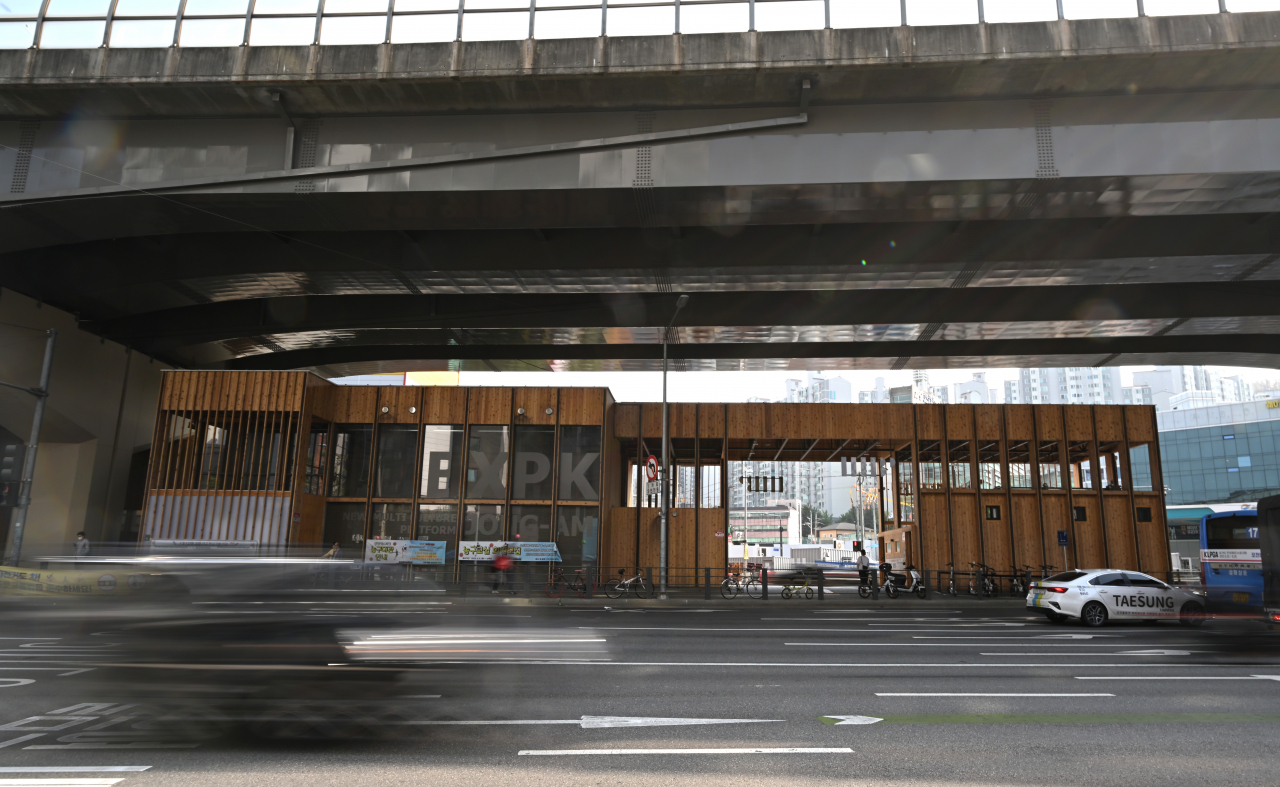 |
A view of Jongam Square, also known as Jongam Box Park, in Jongam-dong, Seongbuk-gu, Seoul (Im Se-jun/The Korea Herald) |
With more than 9.4 million people living in the capital city sprawling 605 square kilometers, Seoul is one of the most crowded cities in the world. It boasts a population density of some 15,567 people per square kilometer. New York City, by comparison, has a population density of about 11,313 people per square kilometer.
It comes as no surprise that in Seoul, where space is scarce, we build not only above ground and underground, but over and under existing structures as well. We also cover streams and build over them.
Built on a traffic island under Naebu Expressway in Jongam-dong, Seongbuk-gu in northern Seoul, Jongam Square is a case of building a new structure under an existing one. This part of the elevated Naebu Expressway, in turn, was built on a covered section of the Jeongneung Stream that courses through the neighborhood.
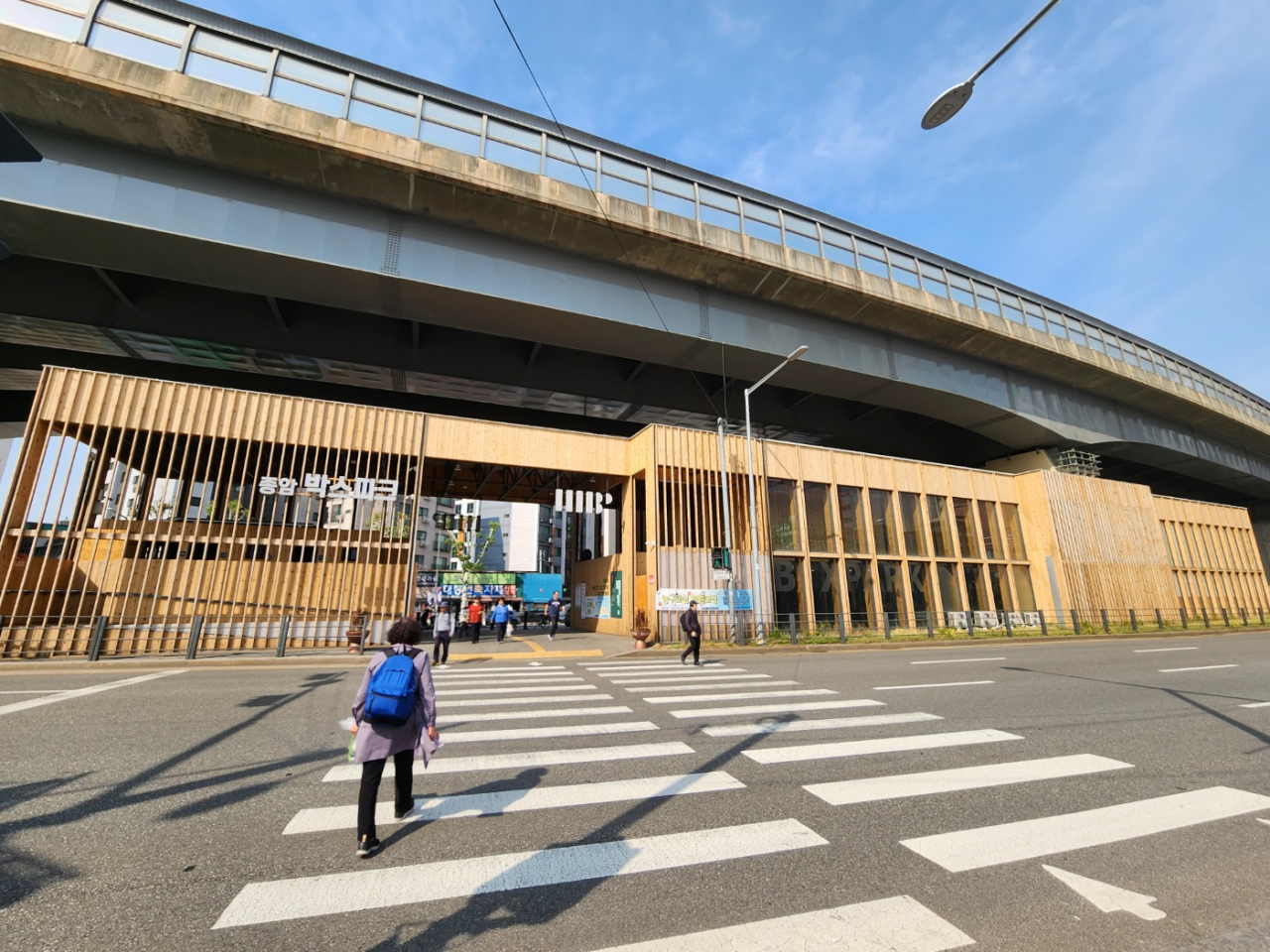 |
A view of Jongam Square (Kim Hoo-ran/The Korea Herald) |
From across the street, the wood-and-glass multipurpose facility is a stark contrast from the heavy, grim-looking Naebu Expressway. A warm presence in a cold and drab environment, the structure sparks curiosity in pedestrians who must walk through or wait for the light to change on this island in order to get to the other side.
What passersby will see are three “boxes,” two of them sharing a connecting area. On one side of the connecting area is a sports facility that can be used as a basketball court or futsal field. On the other side is a multipurpose room that might be a yoga studio, small concert venue or even a meeting hall. In the central area between the two boxes is an information desk and a changing room. The two boxes open on to each other with the connecting area in the middle, enabling the creation of a much larger space.
Apart from the two connected boxes is a wholly separate box containing public restrooms that shares the polycarbonate roof with the other structures.
The use of translucent polycarbonate sheet as roofing material allows the light to filter in through the roof under the elevated roadway. The wooden louver on the outside and floor-to-ceiling windows allow light to flood in, creating a feeling of lightness and cheerfulness inside the structure.
Jongam Square, also known as Jongam Box Park, is among the pilot projects initiated by the city of Seoul in 2017 aimed at turning dead space under the city’s many elevated roadways into community facilities and social infrastructure. These spaces are often littered with piled up waste, or have been taken over by illegally parked vehicles. Sometimes they serve as temporary shelters for the homeless.
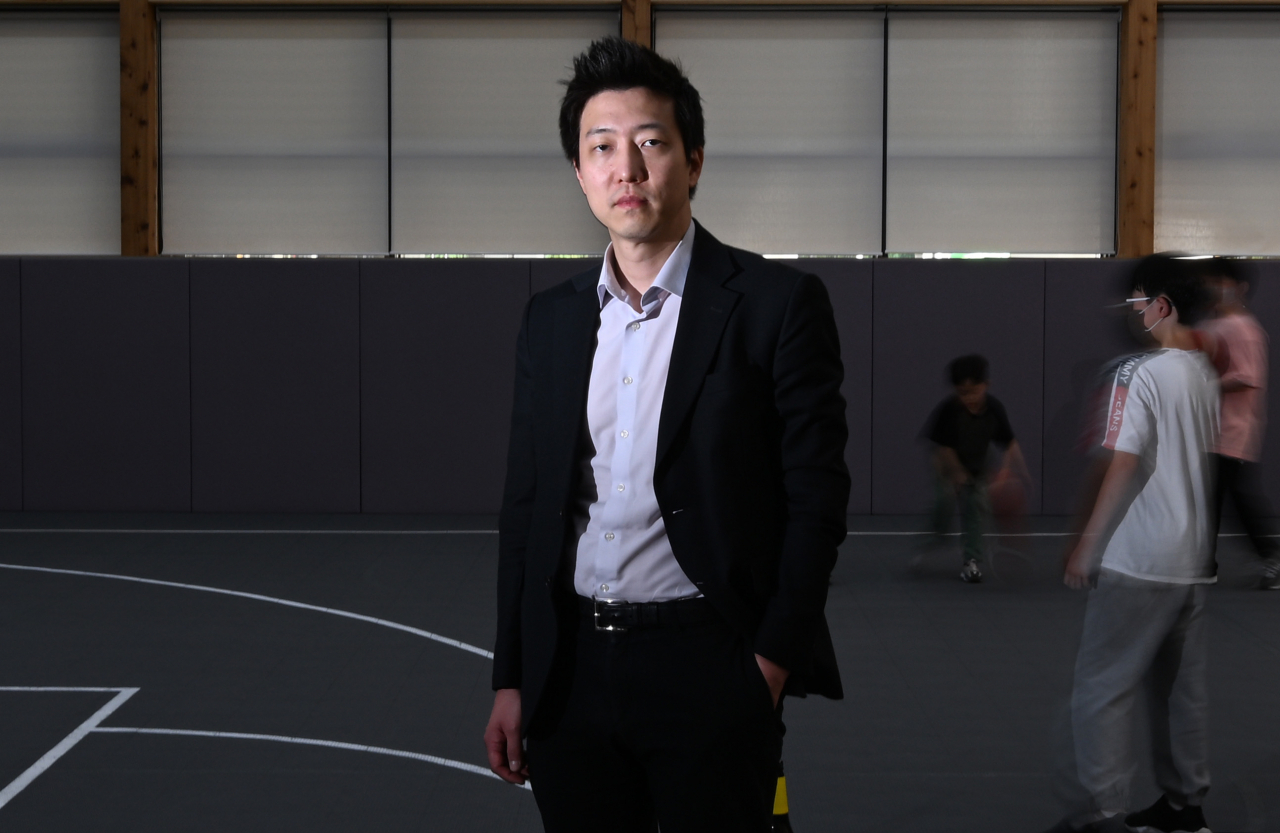 |
Park Chung-whan, a professor at Hongik University College of Architecture and Urban Planning and a principal at Simplex Architecture (Im Se-jun/The Korea Herald) |
“Unlike private projects, in public projects the client is not the user,” said Park Chung-whan, a professor at Hongik University College of Architecture and Urban Planning and a principal at Seoul-based Simplex Architecture, during an interview with The Korea Herald on May 11. “The users are the citizens. All citizens.”
Jongam Square was initially envisioned as a sports facility. The area sorely lacked such facilities -- not surprising given that there were just 110.8 sports facilities per 100,000 people in Seoul in 2021.
“Initially there was a request for a bigger space. The residents wanted a sports facility and the district officials wanted as large a facility as possible,” said Park.
The client, in this case Seongbuk-gu, and the architects clashed on two fronts. “We wanted a number of smaller spaces rather than one large space so that people could use them in different ways. Another thing was that we did not want to limit the use of the space to just sports. We wanted to create a space that could be used flexibly by all different types of people,” Park said.
Ultimately, the available land space did not allow for something large, and the architects explained to the officials that the multipurpose space could also be used for sports if necessary. “I heard that the multipurpose space has been used for kimjang and yoga, so it is being used as we had intended,” Park said. "I am happy."
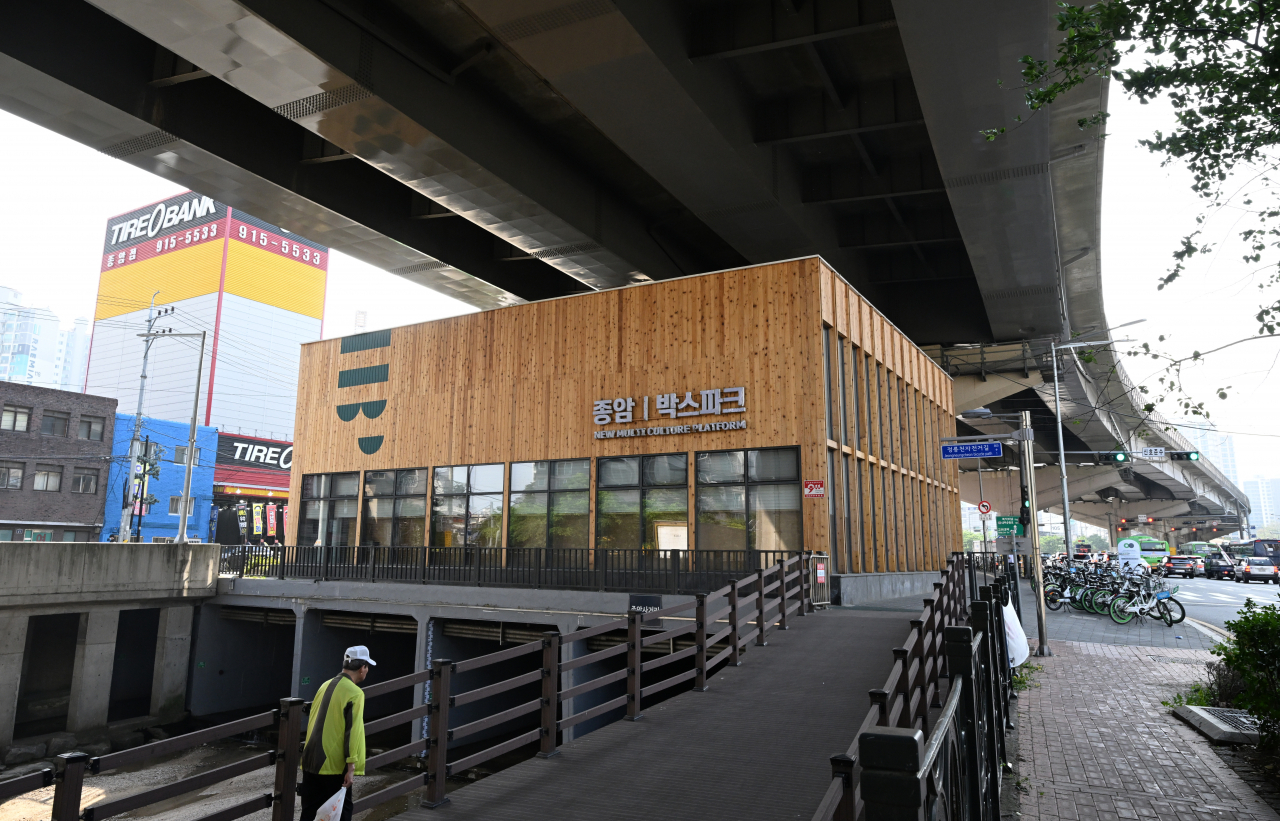 |
The sports facility component of Jongam Square in Jongam-dong, Seongbuk-gu, Seoul (Im Se-jun/The Korea Herald) |
“Where the toilets are now, we initially had a cafe in mind. We thought that with a cafe there, people would use the space in a more active manner,” Park said. But a larger restroom area was requested and the district office did not want a commercial facility. “So instead of a cafe, the space was turned into toilets,” Park added.
Changes to the design were possible because of the type of competition through which Park’s design was chosen. The competition asked for “suggestions,” requiring very little in terms of a concrete plan. “Once selected, we (the architect and client) work on it together,” Park said.
 |
Seongbuk-gu residents take a yoga class on May 11 at Jongam Square. (Park Yuna/The Korea Herald) |
Park visited the site numerous times during the construction phase. “It was an interesting project and also one of the few projects we were doing in Seoul. So, I would sometimes stop by on my way to school,” Park said.
He recalled being hit with the scent of western red cedars in his nose as he stood in front of the structure after the wooden panels had been placed. “It felt really good. I had never smelled such a strong scent of wood. As I said earlier, there are not many wooden structures. Smelling the wood in the middle of that street was an unusual situation,” he said. “I realized that this was something different and it felt good.”
Jongam Square began its life as a vaccination center in March 2021 before it officially opened to the public a year later. “It was a bit regrettable that the space was being used in a way that was different from what we had intended. But when I saw social media posts of people who were vaccinated there posing in front of it, I thought that it was meaningful that the place served a very important need at that time," Park said.
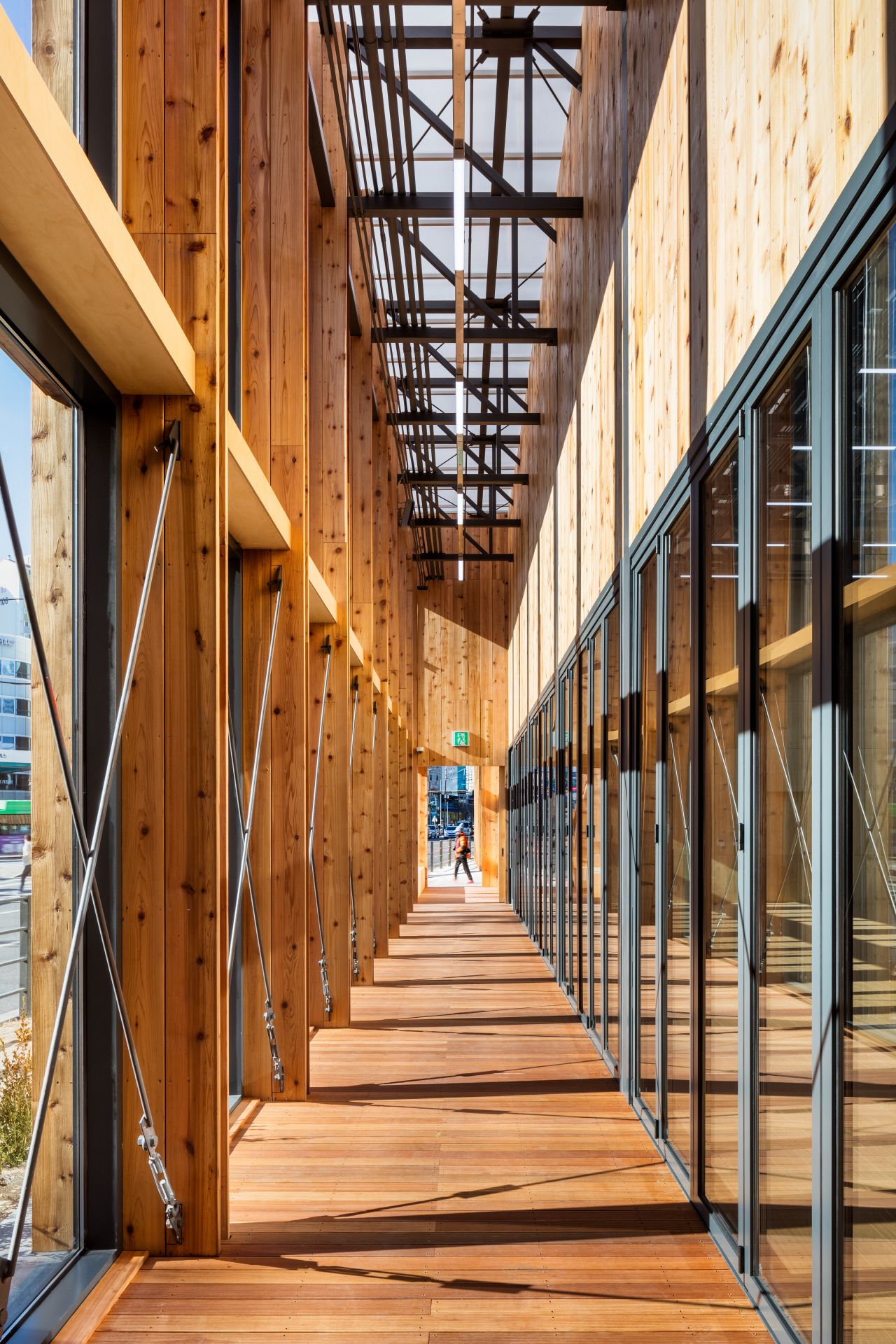 |
Passageway at Jongam Square after completion in 2021 (Shin Kyung-sub) |
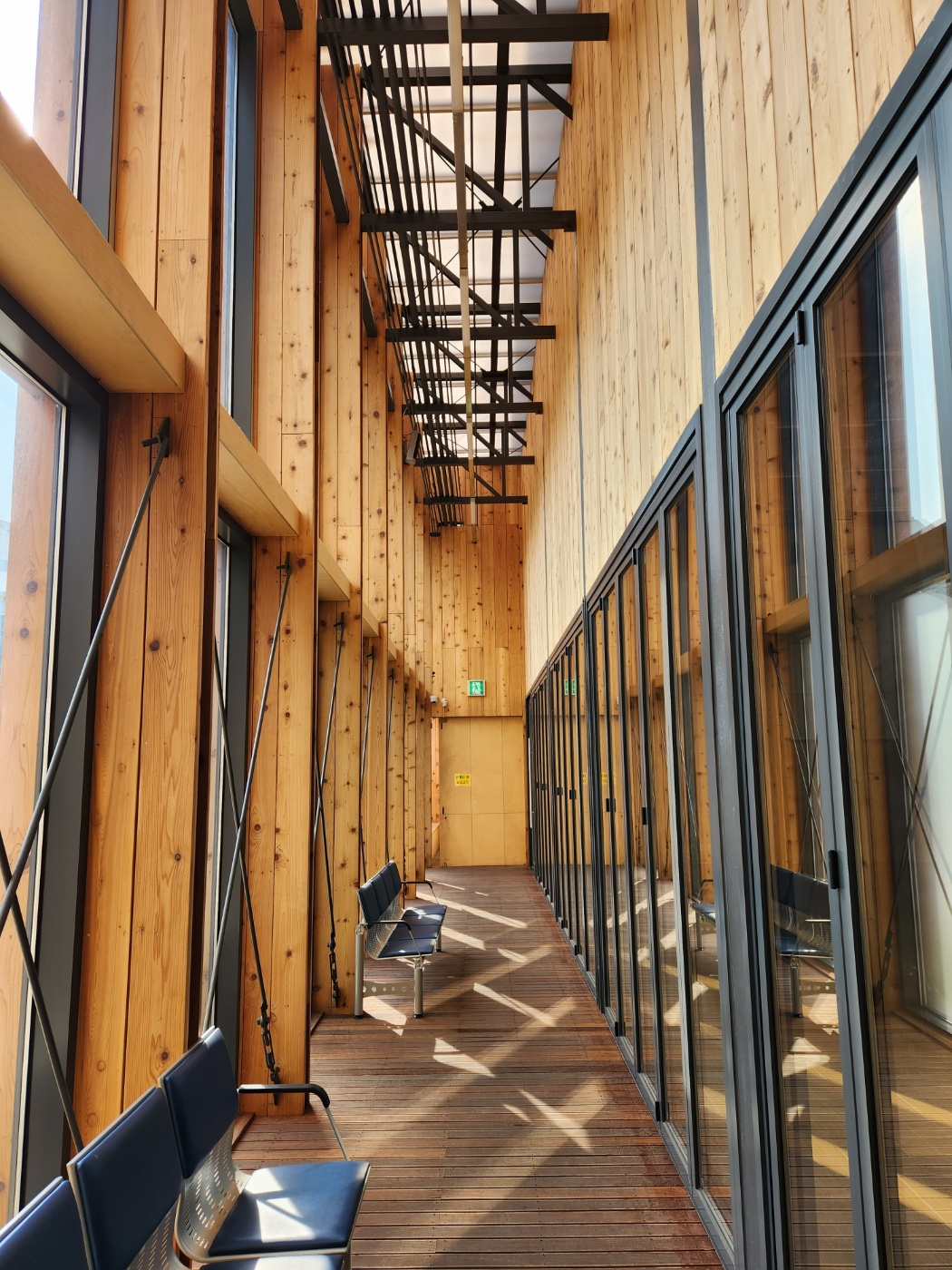 |
Passageway at Jongam Square on May 11 (Kim Hoo-ran/The Korea Herald) |
When Jongam Square finally opened officially in the summer of 2022, changes made during its use as a vaccination center remained. “I am sorry to see the information center booth and the closing off of one of the entrances,” Park said. The opening at one end of the facility had been designed to get people to naturally walk into it.
The covering up of the floor-to-ceiling windows in the sports facility as a safety measure interfered with the architect’s intention of inviting the outside greenery inside, but Park appears to have made peace with that too.
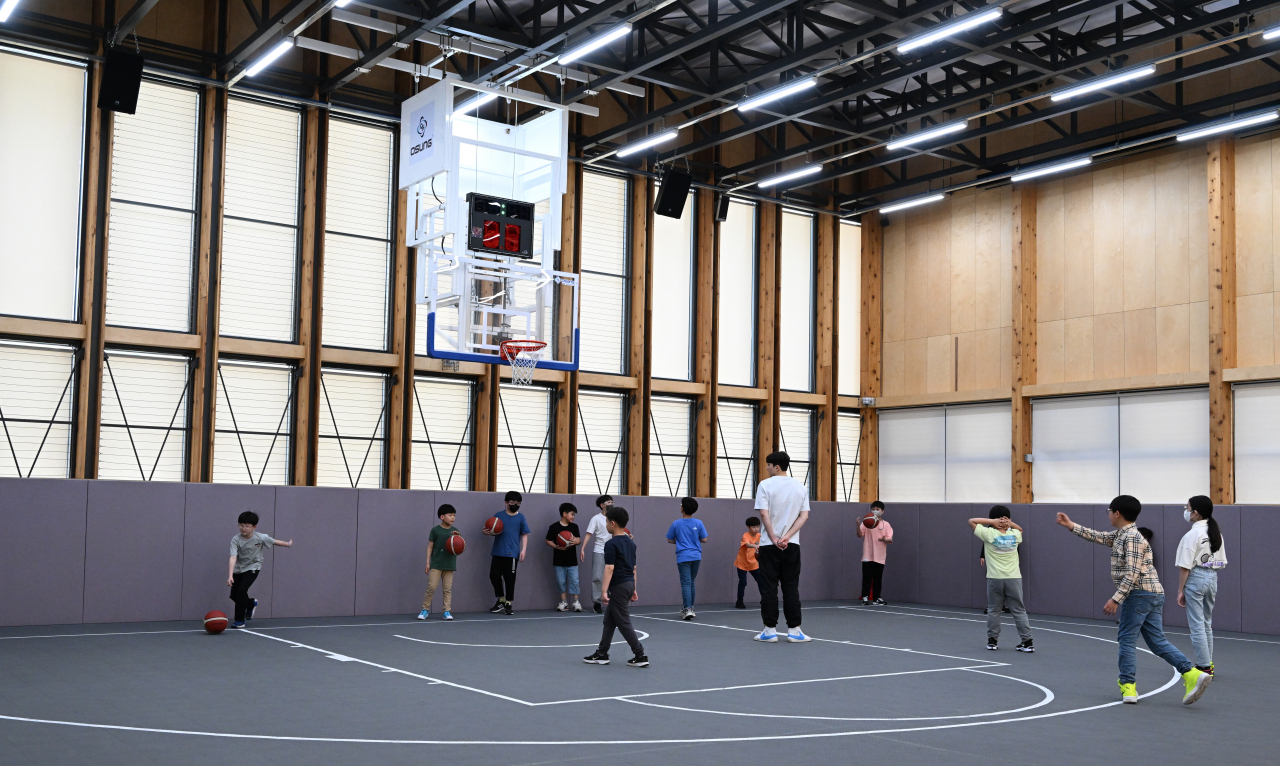 |
Children play basketball at Jongam Square's sports facility.on May 11. (Im Se-jun/The Korea Herald) |
“If I were to choose between a space that is exactly the way I had designed it but standing empty, unused by people and a space that has been altered slightly, but that is being very actively used, I would choose the actively used space,” Park said.
Jongam Square won an award at the 2022 Seoul Architecture Award. That same year, Park received the Korea Young Architect Award.
"With public projects, the architect must explain what kind of space he wants to offer people and how he would like people to use the space. If the intention is good and it is well-executed, it will result in a space that people will use well," Park said. "This is our goal in doing public projects."
--
This is the sixth article in a seven-part series exploring the role and impact of public architecture in civic life. — Ed.







